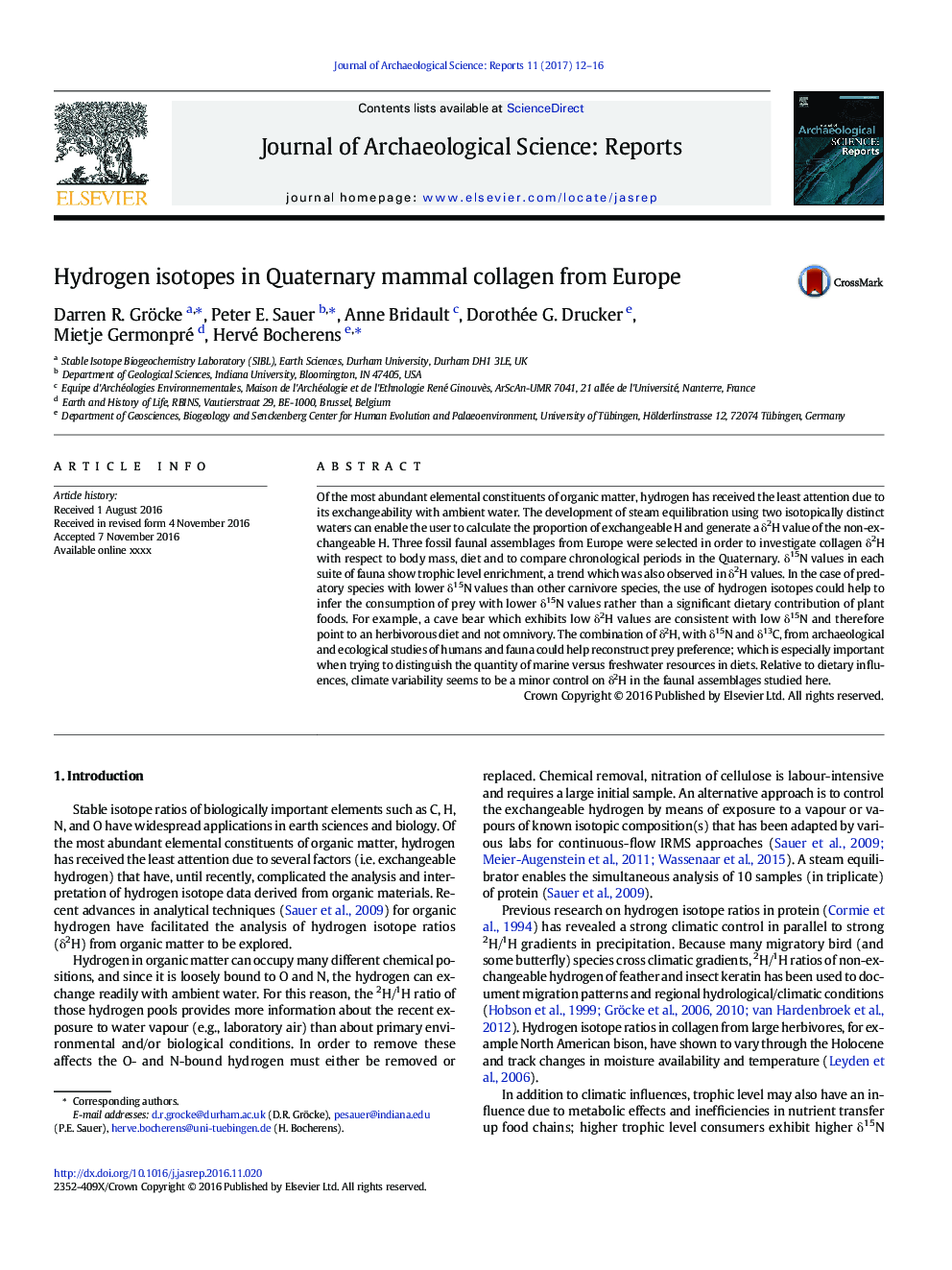| Article ID | Journal | Published Year | Pages | File Type |
|---|---|---|---|---|
| 5112605 | Journal of Archaeological Science: Reports | 2017 | 5 Pages |
Abstract
Of the most abundant elemental constituents of organic matter, hydrogen has received the least attention due to its exchangeability with ambient water. The development of steam equilibration using two isotopically distinct waters can enable the user to calculate the proportion of exchangeable H and generate a δ2H value of the non-exchangeable H. Three fossil faunal assemblages from Europe were selected in order to investigate collagen δ2H with respect to body mass, diet and to compare chronological periods in the Quaternary. δ15N values in each suite of fauna show trophic level enrichment, a trend which was also observed in δ2H values. In the case of predatory species with lower δ15N values than other carnivore species, the use of hydrogen isotopes could help to infer the consumption of prey with lower δ15N values rather than a significant dietary contribution of plant foods. For example, a cave bear which exhibits low δ2H values are consistent with low δ15N and therefore point to an herbivorous diet and not omnivory. The combination of δ2H, with δ15N and δ13C, from archaeological and ecological studies of humans and fauna could help reconstruct prey preference; which is especially important when trying to distinguish the quantity of marine versus freshwater resources in diets. Relative to dietary influences, climate variability seems to be a minor control on δ2H in the faunal assemblages studied here.
Related Topics
Social Sciences and Humanities
Arts and Humanities
History
Authors
Darren R. Gröcke, Peter E. Sauer, Anne Bridault, Dorothée G. Drucker, Mietje Germonpré, Hervé Bocherens,
